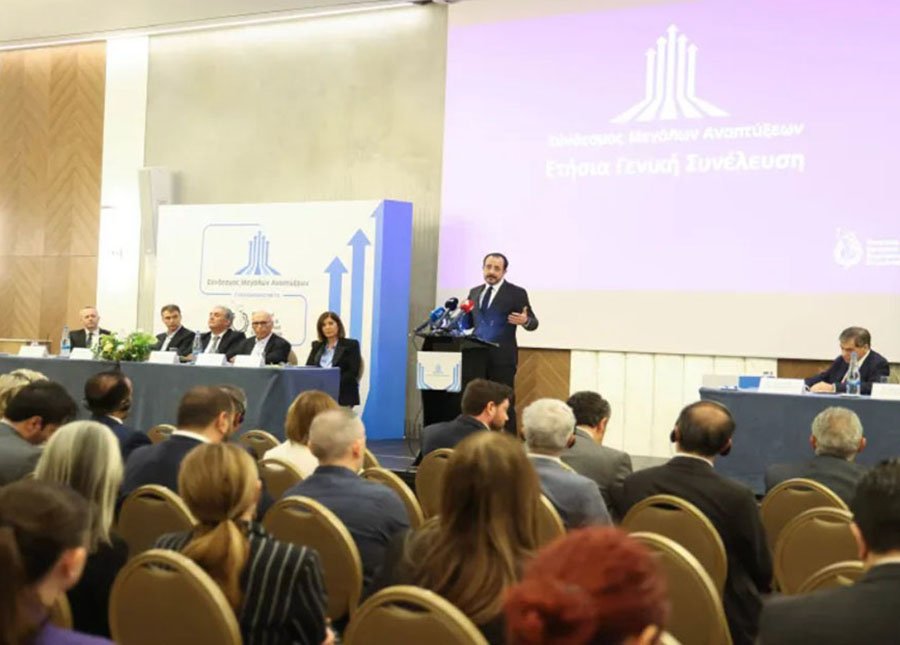читайте также
 Eurozone on Alert: ECB Flags Growing Vulnerabilities in the Financial System
Eurozone on Alert: ECB Flags Growing Vulnerabilities in the Financial System
 Hotel Investment 2025: New Opportunities for the Market — Key Insights from the Cayuga Conference
Hotel Investment 2025: New Opportunities for the Market — Key Insights from the Cayuga Conference
 Vietnam Hit by Record-Breaking Floods: Tourists Advised to Change Their Plans
Vietnam Hit by Record-Breaking Floods: Tourists Advised to Change Their Plans
 WTTC: Travel & Tourism to Create 91 Million New Jobs by 2035 — but a 43 Million Workforce Gap Looms
WTTC: Travel & Tourism to Create 91 Million New Jobs by 2035 — but a 43 Million Workforce Gap Looms
 How Children Receive Residence Permits in Europe: Full 2024 Statistics
How Children Receive Residence Permits in Europe: Full 2024 Statistics
 Cyprus to Introduce Construction Police as Oversight Tightens in 2026
Cyprus to Introduce Construction Police as Oversight Tightens in 2026
Migrant Workers and Labor Shortages: How the EU Is Closing Workforce Gaps and Preparing for 2030

The European Union openly calls migrant workers one of the most vital resources for the economy: without their participation, Europe cannot close workforce gaps or meet its employment goals by 2030. New data from the European Commission shows that migrants are already helping the bloc get closer to its target employment rate of 78% among people aged 20–64. However, to make this progress sustainable, the EU must address key barriers — from language and degree recognition to hidden discrimination and the challenges of balancing family responsibilities with work.
Why Migrants Are Part of the Solution
A real contribution to employment. In 2023, non-EU citizens made up about 6% of the bloc’s workforce (compared with 2% in 2010). Employment among migrants grew mainly in shortage sectors — from machinery and plant operations to services and agriculture — while native employment declined.
A workforce reserve. According to the European Commission, around 51 million people from vulnerable groups could strengthen the EU’s workforce, including roughly 7 million migrants. Their inclusion is the fastest way to fill “bottlenecks” and sustain productivity growth.
Where the Bottlenecks Are
Qualification and education recognition. Even highly educated migrants are more likely to be unemployed than EU citizens, as degrees often go unrecognized and skills remain underutilized.
Language and adaptation. Poor language proficiency is one of the main reasons migrants are concentrated in low-wage jobs despite having higher qualifications.
Discrimination and care responsibilities. Migrant women are disproportionately affected, often leaving the labor market due to childcare duties and inflexible work schedules.
Bureaucracy. Complex work permits and long processing times slow down hiring, especially in industries with urgent demand.
What the European Commission Proposes
Comprehensive integration: language courses, civic orientation, training, and recognition of qualifications obtained outside the EU.
Financial incentives for employers: subsidies for staff adaptation, reimbursement for training, and mentorship programs.
Job assistance: targeted career services and faster job matching in shortage sectors.
Simplified permits: faster implementation of the Single Permit Directive at the national level to combine residence and work authorization.
Digital tools: the EU Skills Profile Tool for third-country nationals helps profile migrants’ skills, create development plans, and match them to available jobs.
What’s Already Working in Member States
Portugal. Between 2017 and 2022, the number of foreign workers more than tripled; their social contributions now cover around 17% of the country’s pension and welfare costs — a major benefit for an aging population.
Czech Republic. Temporary Protection holders from Ukraine have in some cases paid more in taxes than they received in benefits, showing how rapid labor integration eases budget pressure and accelerates inclusion.
New Entry Rules: Balancing Mobility and Security
Entry/Exit System (EES). Starting in October 2025, the EU will phase in electronic border tracking for non-EU citizens using fingerprints and facial data. Replacing manual stamps with digital records will improve border control speed and accuracy across 30 European countries.
ETIAS. Beginning in Q4 2026, citizens of 59 visa-exempt countries (including the U.S., U.K., and Canada) will need online authorization for stays of up to 90 days. Together, ETIAS and EES will simplify legal entry, enhance transparency, and help plan for seasonal workers and students.
How to Turn Potential into Growth: Roadmap for Businesses and Policymakers
For Employers
Adopt skills-based hiring: focus on skills rather than “ideal” European experience.
Use microlearning and mentorship to close skill gaps faster.
Provide flexible schedules and childcare partnerships to attract more women.
Verify qualifications through recognized mechanisms and allow “conditional access” with later certification.
For Governments
Shorten permit processing times and digitalize procedures into one-stop platforms.
Scale up language programs tailored to industry needs (healthcare, construction, transport, IT).
Support regional degree recognition centers and develop fast-track “corridors” for shortage professions.
Invest in AMIF projects — from “POWGEN” (renewable energy) and “WISER” (women’s entrepreneurship) to “INTEGRALITY” (agricultural labor conditions).
FAQ: Quick Answers to Common Questions
Do migrants “take” local jobs?
No. The most visible growth occurs in shortage sectors where local labor is unavailable. Migrant labor helps maintain production and services rather than replace domestic workers.
Why is degree recognition important?
Without recognition, qualified migrants remain trapped in low-wage roles. Faster validation turns hidden potential into productivity and tax revenue.
What do EES and ETIAS mean for businesses?
They create predictable, transparent mobility flows — making it easier to plan seasonal hiring, remain compliant, and avoid penalties.
Conclusion: Investing in Talent Means Investing in Growth
Europe’s population is aging, and without targeted integration of vulnerable groups — especially migrants — achieving the 78% employment goal by 2030 will be difficult. A mix of language and qualification programs, simplified permits, digital tools, and smart business incentives transforms migration from a challenge into a competitive advantage. When talent is matched with opportunity, everyone wins: companies gain productivity, governments collect more taxes, and societies enjoy sustainable growth.
Подсказки: Europe, migration, employment, EU policy, labor shortage, integration, workforce, qualifications, EES, ETIAS, economic growth, AMIF





